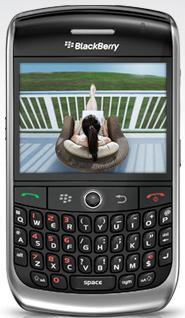Update: RIM has nearly twice the Apple share, gap should continue to grow


The iPhone seems to get all of the attention and admittedly it has done quite well in its almost two years of existence. However, there is a MAJOR reason it will reach a peak here in the US (if nothing changes) while RIM can continue to grow and expand and that reason is the US wireless carrier support. The iPhone is only available on AT&T and may be on AT&T only until 2012 if the 5-year exclusive we heard about in 2007 remains in effect. RIM BlackBerry devices are available on EVERY major US wireless carrier. There are a couple of exclusive devices, but the main consumer devices (Pearl and Curve) can be found on all carriers and the Bold and Storm may eventually roll out to all carriers as well.
RIM is coming out with their BlackBerry App World too that looks to try to encourage a higher quality for applications than what is seen in the Apple App Store at the moment. I actually find several third party applications to be excellent on the BlackBerry platform, in particular the social media apps and communication apps.
I know several people that have recently purchased BlackBerry devices and they are very pleased with the out-of-the box experience. RIM nails it with the BIS for consumers who don't have Exchange servers or other means of syncing data wirelessly and they do it well. No other smartphone requires less from a consumer and gives more than RIM and the BIS. Not to mention the corporate support via the BES and what that offers.
RIM also maintains control over their devices (manufacturer and software) so the user experience is fairly consistent and updates are provided. Granted, the update process is not as smooth as the iPhone and needs to be more consistent across the carriers, but updates are made that add functionality to existing devices.
Another bonus for RIM over Apple is that you can buy different styles of BlackBerry devices that may appeal to a broader audience. Not everyone wants a touch only device and QWERTY keyboards are still much more popular in the US than touch only devices.
The other major player in the US market is Windows Mobile and as an Exchange user I have to say I am still a fan of this operating system. Windows Mobile devices are also available on all US carriers, which may be a major reason it is still doing fairly well. However, the Microsoft model of licensing the OS to many different manufacturers, not providing any real upgrade process, having a limited out-of-the box experience, and no current application store may end up contributing to a growing gap between RIM and Windows Mobile. Windows Mobile is moving forward with initiatives to improve these aspects, but very slowly. The choice of devices and multiple carrier support may sustain Windows Mobile growth until Windows Mobile 7 and beyond, but there are new players (Palm WebOS and Google Android) that may also keep Windows Mobile at bay.
While Nokia is the worldwide smartphone leader, the data has shown continuous market share loss to the other players and they have no real presence here in the US to even speak of so until they do I can't discuss their US impact.
As you can see the US smartphone market is still very fragmented and will remain that way for years to come. I actually don't mind this since there are devices available to meet everyone's specific needs and competition is good at making companies innovate and continue to improve their products. It does seem that RIM is overlooked at times and has the potential to widen their lead over the iPhone, even though the iPhone seems to get all the press.